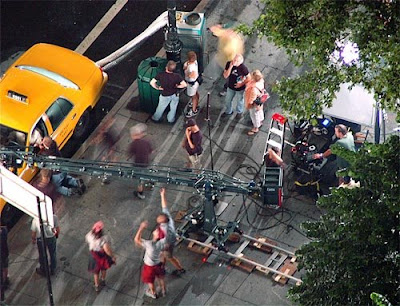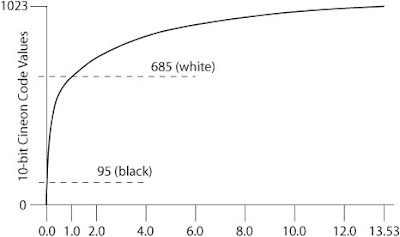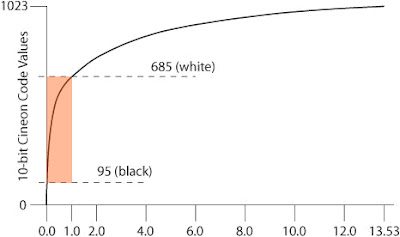
This is what I have been waiting for long....






 Jenny Chen: Fluid Explorations
Jenny Chen: Fluid ExplorationsTao is the way or the path, the journey that we take in relation to nature, where nature and the human soul connect, where there are no real differences, no distinctions, only the way of nature revealing itself in all actions, perpetually striving to find balance in the universe and within the human soul. This idea, founded by the Chinese philosopher Lao-tzu in the sixth century before the Christian era, has also played an important part in Chinese painting over the centuries, including the present century. Jenny Chen is connected to this idea as revealed in all aspects of her work. Therefore, the facile connection to Western art is perhaps more an affinity than a real influence. The fact that we can see in her work the gestures and marks of abstract expressionism does not mean that he work is a simulation. Instead I would argue for the originality in the paintings of Jenny Chen, especially in terms of where she has taken these ideas in the current exhibition.
For the Taipei Cultural Center , the artist began thinking in terms of casting. The use of transparent overlays in the video film inspired this concept to some degree. Initially Chen started working with small rectilinear blocks in which the fields of grey, black, and white were layered and overlaid differently with each casting. These blocks or modules are generally equal in size so that when they were placed side by side the textural depth of each interior form became explicit in the same way that it might appear on paper after making a calligraphic brushstroke. The major difference, of course, between paper and resin is the liquidity of the material and the precise timing that is necessary in order for the form to evolve before the next layer is applied. Given that the use of epoxy requires the artist to wear a mask for respiratory protection, there is some limitation in terms of physical mobility that is not the same as using a brush on paper. The experience of doing the work and remaining alert to the kind of precision and intuition necessary to allow the form to evolve requires a subtle shift in thinking through the process of the work.
There is a kind of intuition involved in the realization of these liquid forms, an intuition that is never exactly predictable. Even so, a trained calligrapher and painter, such as Ms. Chen, can use these accidental effects to her advantage. Limitations in one’s material or work process do not necessarily imply inhibition. It is quite the opposite. As Taoist masters understand, the recognition of one’s limitations can become a source of great energy. We cannot assume to know everything consciously as we engage in the process of art. Much of what happens will happen because desire is put aside, and we awake to the energy that is truly within us. In the West what we may call “accidental” is not at all accidental to the Chinese painter. What happens in the process of painting, regardless of the medium – ink on painter or acrylic on resin – has its own logic, a logic that relates directly to the process of nature.
...Art is the mind of nature, and what we are seeing in these works is the vibration of a moment in time, a moment whereby we return to ourselves. By returning to ourselves we come into the space of existence through the art of meditation.
09/26 Fri. 20:00 動畫講座:動漫遊嘻 主講人:策展人/動畫導演 Sharon Wu NT.100
一堆嘻笑怒駡的動畫短片, 一場創意喜劇的盛宴.
10/05 Sun. 15:00 動畫講座:另翼製作—新生動畫祭 NT.100
精選近年全世界各大動畫學院的學生動畫影片,與國內觀眾分享, 一同觀摩, 一同學習.







負片底片之所以叫作負片是因為曝光區域去打亮化學感應層, 使曝光區域變暗與不透明, 且未曝光的區域在沖片過程中會變成透明. 所以光線造成負片上的暗部, 就是相反之意.
在此暗部裡的意思是相對的, 例如一張白色的紙會在負片上出現一個清楚黑暗區域, 但是一個燈泡可以把負片弄的更黑一些, 如果拍攝太陽便會得到全黑的負片的道理是一樣的. 但這是沒有受到完整的高亮光均勻曝光,因為負片有能力去捕捉亮光區與超級亮光區之間的差異. 所以Film是最早有能力捕捉高動態光線的媒體.
如果妳了解上述的負片曝光邏輯,去轉換成線性來看會得到下列插圖的曲線







你是否有經驗, 在使用數位相機拍攝日落或日出, 總是立刻發現數位相機內部的曝光範圍非常有限, 想要保留背景天空美麗色彩時, 前景又會變的黑暗無比, 所以開大光圈或增長曝光去想要保留前景的肉眼可見層次, 而背景的天空又因開大光圈或延長曝光造成曝光過度一片死白, 毫無亮部層次可言.
由此可證明數位相機裡的感光從最暗~最亮的Dynamic Range非常有限與狹小, 所以很難捕捉像日落或日出影像從最暗>最亮的寬廣Dynamic Range在同一張數位影像中.
戶外光線有著非常寬廣的亮度變化, 但任何記錄裝置也只能取其中的一段光線亮度部份. 透過不同的快門與光圈去取不同段光線亮度, 但每次的亮度寬容度都是固定的.
我們的眼睛可有著較寬廣的Dynamic Range, 而且我們的大腦更會記憶那些組合起來的Dynamic Range, 所以透過人類眼睛去看日出與日落之前景與背景都是非常容易. 但人眼也有在某些情況會有困難去辨識影像, 例如:某人背後有著強光妳會有困難看清楚他是誰, 或是在大太陽下使用筆記型電腦, 妳會有困難看清楚電腦螢幕.

所以某人背後的強光並沒有把前面的人變得比較暗或影像不清楚,是內眼會自動的生物反射反應將瞳孔縮小保護眼睛去適應刺眼的強光光線寬容度. 同時也對原正常人的光線寬容度因肉眼的瞳孔調整而偏離可見的光線寬容度, 所以感覺到某人變暗而無法辨識.
當你覺得你的螢幕不夠亮的時候, 你會拉下窗簾或把房間的光線調暗的道理是一樣的. 當你試著在一個較暗的螢幕上顯示一張很亮的天空影像時, 該影像的所有色彩資訊因為暗螢幕的關係被整體向下變暗顯示在螢幕上(其影像本身實質不變), 即使如果你的數位相機能捕捉多餘dynamic range, 也無法在你的電腦螢幕上顯示, 而且要如何去儲存那些超出螢幕所能顯示以外的色彩資訊在影像上呢?
在一個8bit的電腦數位影像使用0~255的細分層次去呈現RGB畫面像素在螢幕上. 如果你能紀錄畫面數值是超過255以上的資料,例如285或310, 那就會超出螢幕的dynamic range, 就是比純白或超級亮更亮的情況發生. 因為8bit像素不能真的超出255以上的方式顯示, 所以超出最亮部的資訊(ex:285或310)是以當0.0是全黑與1.0最全白的浮點概念下被儲存. 因為浮點數值在一種可來回的抽像概念, 像0.75, 7.5或750.0 都是可以被接受數值. 即使每個數值在1.0以上便無法顯示在螢幕上!
有關這方面HDR技術文件最受到注意由Malik與Debevec在Siggraph ‘97年時所發表的 (請參閱:www.debevec.org)
在為了獲得標準的曝光概念裡, 合理的曝光數值可以去比較,進而推論解釋攝影機對不同明暗光線的反應程度, 此種反應資訊可以提供電腦去連接影像的最亮區域到最暗區域. 再結合出每一級曝光的細節去計算出正確浮點像素數值資料. 在HDR影像裡時常忘記我們有一種媒材能夠捕捉光線動態範圍是遠超過我們的電腦螢幕能夠顯示. 那個媒材就是傳統底片(Film).


 有一天與朋友閒聊起一些Film Title Design, 讓我想起2001我與Nico(SVA)參加在LA舉辦的After Effects West活動(當時After Effects 5.0才剛上市), 其中就有一個Film Title Design座談會由大師Pablo Ferro主講, Pablo Ferro將近半世紀的電影從業與電影片頭設計, 可惜的是我印象中Pablo Ferro的個人網站似乎停掉, 只能從IMDB中找到他曾經參與的影片/片頭設計. 他也致力於努力推動奧斯卡金像獎增加Film Title Sequece Design為正式獎像的重要人物之一.
有一天與朋友閒聊起一些Film Title Design, 讓我想起2001我與Nico(SVA)參加在LA舉辦的After Effects West活動(當時After Effects 5.0才剛上市), 其中就有一個Film Title Design座談會由大師Pablo Ferro主講, Pablo Ferro將近半世紀的電影從業與電影片頭設計, 可惜的是我印象中Pablo Ferro的個人網站似乎停掉, 只能從IMDB中找到他曾經參與的影片/片頭設計. 他也致力於努力推動奧斯卡金像獎增加Film Title Sequece Design為正式獎像的重要人物之一.

